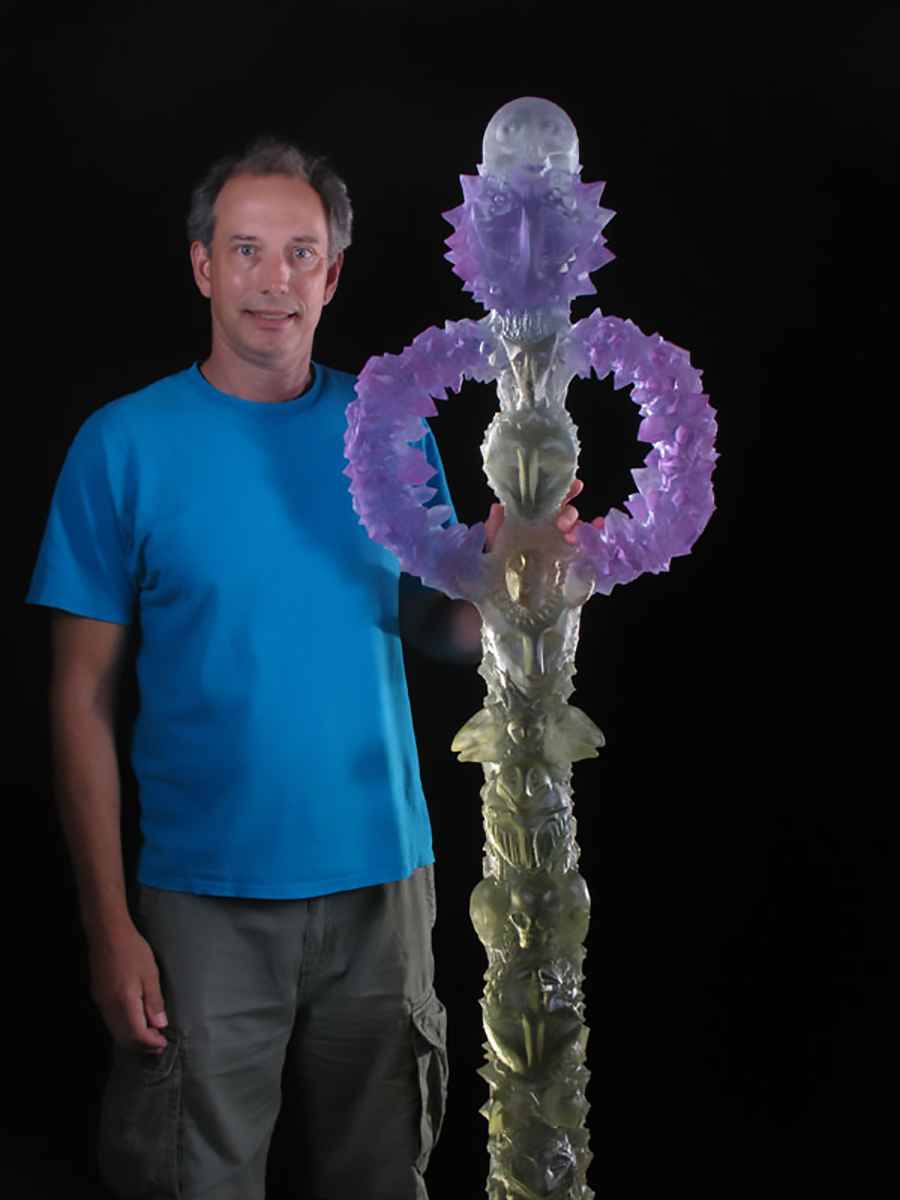Mark Abildgaard Works

Marc began his art education as a ceramic major at San Francisco State University in 1976. He became involved in the Raku firing process of taking ceramic objects out of a hot kiln. The spontaneity of this process led him to work with hot glass, which became the most compelling material to attempt to work with.
After graduating from San Francisco State Marc continued to work with glass as part of his graduate program at the University of Hawaii. He was exposed to many images from the Polynesian culture through Pacific Art history classes at the university. He started to use boat images in welded metal sculpture that he was making at that time. His work in glass was mainly devoted to exploring blown vessels and color during this period.
Marc graduated in 1983 from the University of Hawaii with a Masters of Fine Arts degree. In 1984, he went to work at the Tokyo Glass Art Institute as a visiting artist. At this time he was still involved in making blown glass vessels with elaborate colored designs. In Japan he was exposed to the Pate de Verre process of making glass objects by fusing crushed glass into plaster molds with an electric kiln.
In 1985 Marc received a five-month fellowship at the Creative Glass Center of America in Millville, New Jersey. He had been blowing glass for seven years, but decided to concentrate on casting solid sculptural pieces during his fellowship. Artists like Bertil Vallien, Howard Ben Tre and Hank Murta Adams inspired his pursuit of casting glass sculpture. He made a range of totem and boat images using the sand casting technique.
After returning to California in 1986 Marc realized that the only economically feasible way to pursue his work as a studio artist was to develop a simple technique for fusing glass into investment molds with an electric kiln. He began using clay to sculpt his images and found a bronze casting investment that would work with glass as a mold material. After building his first electric kiln in a rented garage in Davis he started to work with fusing crushed glass. And now, many years later, he is still exploring the potential of this basic technique. He has found that working with clay allows allows him to develop textures and forms that would be difficult to produce in glass using any other method.
Artist Statement
The sculptures I create reflect the inner energy of life. The figurative images in my work give me the inspiration to create forms that are connected to the human experience. By using a figure as a starting point in my work I am able to explore the subtle nuances in each form that will ultimately define the final image. In making sculpture I seek to achieve a balance between line, volume, texture and color. Because I work in clay to create the original work I am able to focus on developing form and texture without the distraction of color. One of the challenges of using glass as a sculptural material is to find a way to work with color and light that will not detract from the original idea. The nature of glass allows adding an incredible power to the sculptural image by reacting with light. I create work that will be enhanced by this unique characteristic. I use simple forms to represent faces, bodies, and heads. I am trying to find archetypal images, which are not cultural specific. In working with these images I am seeking a way to combine ancient forms and my own life experiences. I strive for my work to represent this connection to the past.

